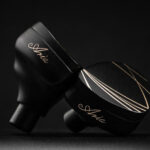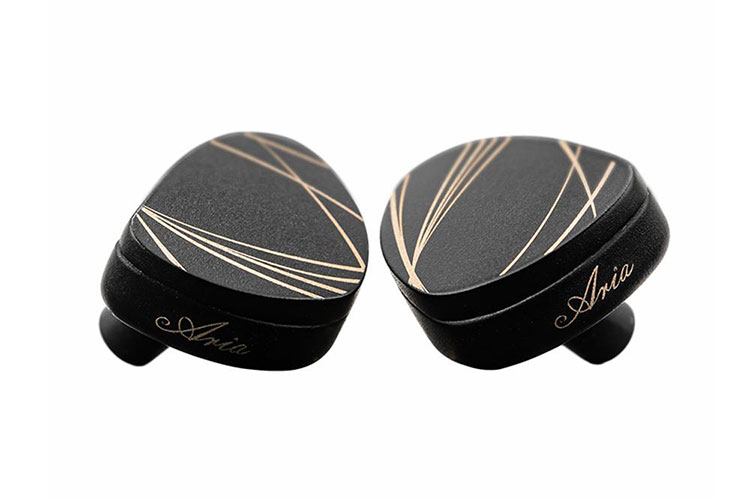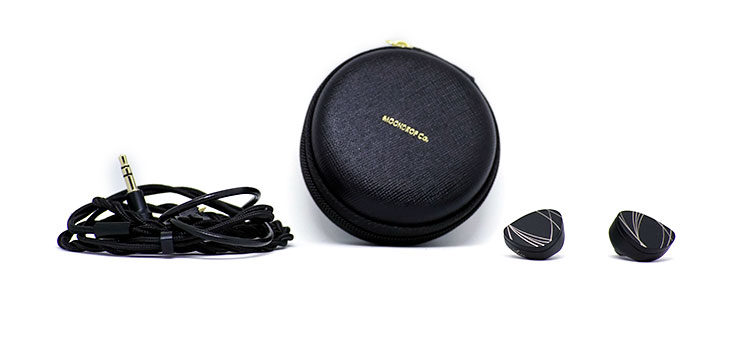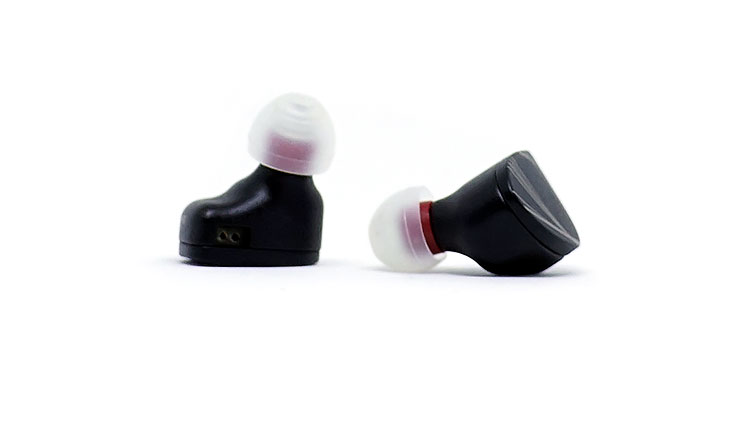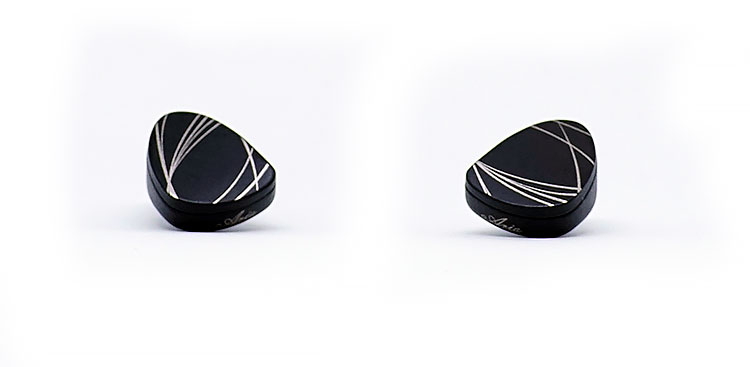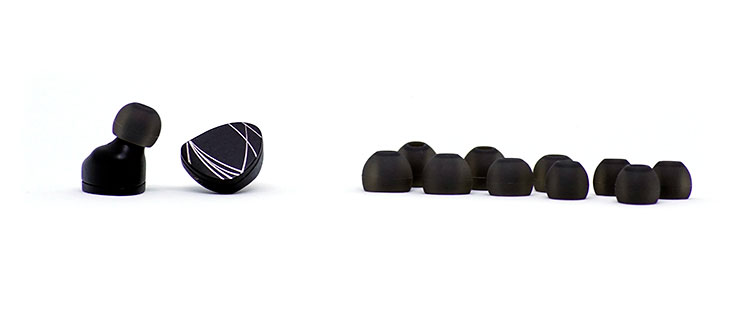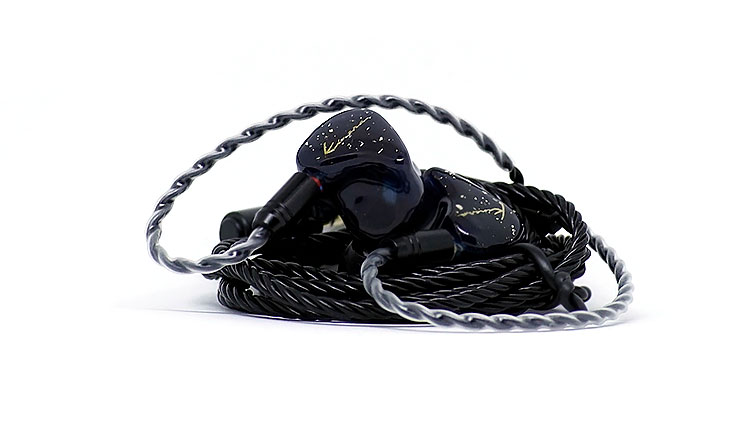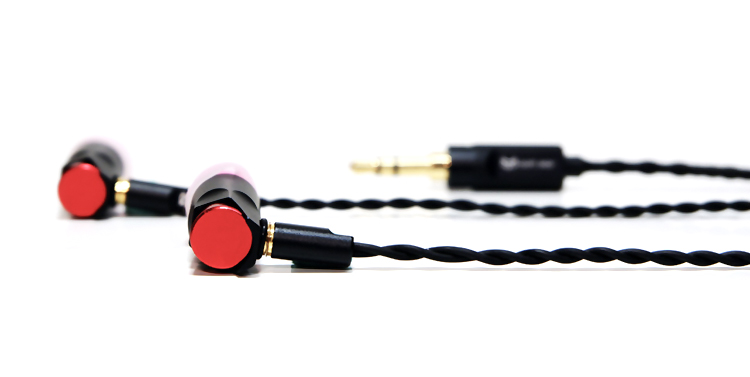A review of the Moondrop Aria which is an affordable single 10mm LCP diaphragm and CCAW voice coil dynamic driver universal IEM. It is priced at $79.99
Disclaimer: This sample was sent to us in exchange for our honest opinion. We thank the team at Moondrop and Shenzhen Audio for giving us this opportunity.
To read more about Moondrop products we have previously featured on Headfonics, click here.
Note, that this article follows our latest scoring guidelines which you can read up on here.
It came, it left and now it has reappeared apparently. The Moondrop Aria is not so much a MKII with some tweaks but rather it is being pitched as an entirely new IEM.
The older version ran from 2018 but just for a few months so user experience outside of the Chinese domestic market might be a bit sparse.
The new Moondrop Aria is still very much their entry-level offering at $79.99, but this time around it pulls from a lot of their newer technology in the market from the likes of the more expensive Starfield.
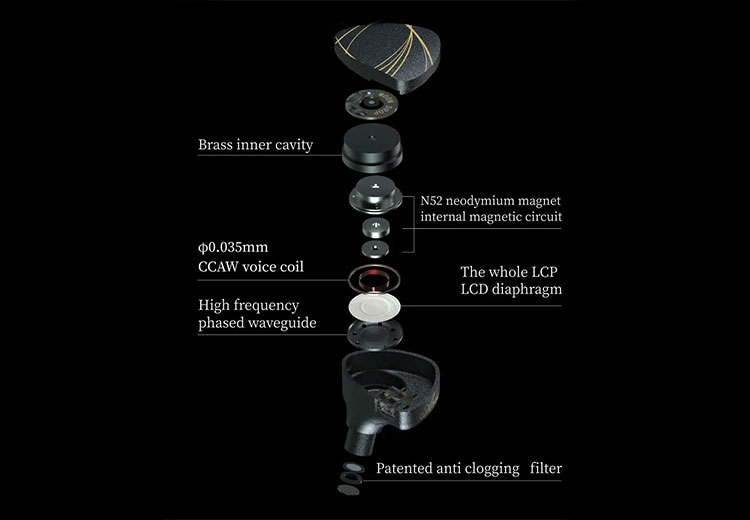
Tech Highlights
The Moondrop Aria is a single 10mm dynamic driver universal monitor featuring the same dual brass-plated inner cavity and a neodymium N52 magnetic circuit.
Starfield users might also quickly spot the same lightweight Japanese-made Daikoku CCAW voice coils inside the Aria. Moondrop has made these coils central to their lower-tier lineup claiming an improved transient response and dynamic range in the transducer performance.
Where the Aria differs from the Starfield is in the composition of the diaphragm which is a 10mm LCP (Liquid Crystal Polymer) liquid crystal diaphragm which is a material used by the likes of Sony in some of their headphones for an enhanced HF response.
The driver construction is capped off with a redesigned HF waveguide to ensure any improved HF response from the new driver diaphragm is as smooth and distortion-free as possible.
The Aria is rated at 32Ω with a sensitivity of 122dB, which should be easily driven by most portable sources.
Design
The Aria design consists of a 3-piece CNC carved and metal injected molded shell. Aesthetics are completed with a blend of a matte black metal spray and some judicious use of thin curvy lines that stretch over the faceplate.
Honestly, it looks like a rather elegant piece of chocolate, something you unwrap and stuff yourself with a coffee after your Xmas dinner.
And yet, it is anything but delicate with robust and almost tank-like quality. Yes, it is a bit on the heavier side considering it is a metal design but pleasingly, it lacks rigid lines that so often accompany metal monitor builds. Aggressive contouring on the underside is there giving it a quasi-custom design which should improve general fitting.
Carry Case
The Aria’s carrying case looks unique compared to generic black smooth carrying cases. It has a black scratch-proof texture with gold accents through the text logo and zipper.
The inside looks standard – a velvety texture and a small net pouch to put extra tips in place. It will protect the IEMs when stuffed inside your pocket or a bag full of other things.
Stock Cable
There is not a huge amount of detail on the supplied cable, but we do know it uses an SPC wire rather than copper, 1.2m in length and we presume it’s a 4-wire 26-28AWG in terms of internal geometry.
Externally, the cable is a braided woven fabric, with a standard adjustable chin slider to help with cable control. This is just as well since this cable is a bit memory retentive and can tangle quite easily.
The termination on the IEM side is a universal 0.78mm dual-pin interface which should delight cable rollers if they fancy upgrading on the stock offering.
Comfort & Isolation
Wearing the Aria feels very solid due to the metal build of the shell. It is heavier than other IEMs, making it stay firmly in my ears.
The extra weight is nothing to be alarmed about. In fact, it feels premium and comfortable in my ears. The cable hooks were also the right amount of sturdiness and flexibility which makes sure the IEMs do not fall off when you move around.
The stock ear tips offer a decent amount of isolation. Outside noises such as conversational voices were not heard while listening. These are good in filtering outside noise when enjoying a cup of coffee in a cafe while listening to your favorite songs.
Honestly, I found these a delight to wear for hours without causing any irritation or fatigue.
Packaging & Accessories
I was actually quite impressed with the whole unboxing experience for a sub-$100 monitor.
The theming on the compact retail package compliments the design pattern used on the drivers quite closely but as always with Moondrop there is a splattering of anime on the outer sleeve.
The box opens with a magnetic flap, to be greeted with a velvety texture that holds the IEMs in place. Inside, there is another flap to find the semi-hard carrying case which contains the cables and a small, sealed plastic holding 6 pairs of ear tips – 2 sets of 3 sizes of ear tips.
Moondrop thought through the overall experience of users buying their product – starting from the unboxing experience and experiencing the IEM itself. They did a good job packaging the product well while giving a premium experience to the consumers.
Sound Impressions
Bass
The sub-bass on the Aria reaches deep but is not too overpowering. I felt it was a tiny bit lacking for bass-heads, nevertheless, the sub-bass is satisfactory as its presence is felt through a meaty rumble. The notes are full-bodied but clear enough to avoid sounding muddy or suffering from too much bloom.
Overall, the bass on the Aria is quite pleasing and not overpowering to the point that it drowns or muffles the vocals. It is a fun-sounding IEM as it reaches low and gives the ‘umph’ you need when listening to beat-centric genres such as R&B.
Midrange
The mids are a bit uneven in the Aria with the lower mids more recessed than the higher mids. Male vocals are clean; however, it is evident they are a bit farther away than other instruments such as the snare drum.
Female vocals shine in this department. They are clean and crisp, with an airy texture that feels silky as you listen to ballads.
Overall, the mids are crisp, transparent, and airy with the lower mids slightly recessed.
Treble
The Treble is more elevated than the midrange and slightly higher than the sub-bass. In effect, I felt the instruments in the lower and upper regions harmonize with a slightly brighter feel to them.
The treble is snappy and clear. The highs sound sparkly with plenty of treble extension and a forward tuning. Cymbal hits are clear and airy but with a slight sharp harshness. However, this issue is highly dependent on the track you are playing. The high notes do have sufficient air, making it sound noticeably clear on the Aria.
Despite the slight harshness in the upper treble, the Aria still delivers a crisp and clear-sounding treble region.
Staging
Staging on the Moondrop Aria does not feel cramped, but not too spacious either. I found the soundstage of the Moondrop Aria to be similar to other IEMs in its price point, limited to around a 1-inch radius. Some songs presented to have more layering such as Wendy’s Why Can’t You Love Me? – guitar strums heard on my sides compared to the vocals presented in front.
While listening in, instrumental separation is noticeable. The imaging seems to be received accurately – main vocals and backup vocals appeared to be lacing each other.
The Moondrop Aria does a great job in presenting instrument distinction. Even with the vocals, violin, percussion, bass, and acoustic guitar playing at the same time, the imaging did not sound unidirectional and compressed. It is distinct, with above-average layering.
Synergy
Tip Rolling
I tend to prefer more elevated lows so I tried some of my stock ear tips to see how they will fit the Aria. Comply Memory Foam Ear tips are good if you feel the highs on the Aria are a bit too aggressive and they do well in taming some of that edgy attack.
The sub-bass and mid-bass were also significantly increased with a meatier rumble and a more physical mid-bass punch.
I also have some stock SpinFit CP800 laying around, so I paired it with the Aria. Apart from the increased lows and tamed highs there is also a slight increase in the sound stage. These tips seem a more balanced pairing with the Aria compared to the foam’s denser sound.
Source Pairing
With an impedance of 32Ω and a sensitivity of 122dB, the Aria is not terribly hard to drive. Even an iPhone 12 PRO Max delivered a decent performance and a relatively low current demand at just 25% volume levels.
Volume is never an issue with the Aria. However, it is noticeable that there is a lack of sound stage and imaging when paired with my phone. Moving to a dedicated DAP, the Shanling M3s there is a definite improvement in terms of vocal presence, instrumental separation, and dynamic range.
Select Comparisons
Kinera BD005 Pro
Design
The Kinera BD005 Pro has a translucent acrylic shell with a metal nozzle while the Moondrop Aria has a metal shell throughout. When I tried the Kinera BD005 Pro, I felt the shell was too big for my ears while the Moondrop Aria was perfect for my ears as it felt snugger.
Both IEMs have an ear-hook design with a 2-pin termination. The jacket in the BD500 Pro is a bit easier to manage with less memory retention compared to the stock Aria cable. However, overall, I would prefer the cable on the Aria as it came with a standard chin slider which is important for me personally when using IEMs on the go.
The amount of flexibility and stiffness of the memory hooks on the Aria makes the BD005 Pro’s ear hooks seem flimsy. Certainly, the BD005 Pro hooks make it hard for the cables to stay in place around my ears.
Performance
The sub-bass is certainly more generous on the Moondrop Aria compared to the Kinera BD005 PRO. The BD005 PRO low-end is significantly recessed compared to the Aria, which has a stronger and meaty rumble.
The midbass is also more pronounced on the Aria than the BD005 pro. Bass riffs are noticeably felt in the Aria compared to the hollow presentation with the BD005 PRO, which makes the Aria more enjoyable listening to R&B and Dance genres.
Male vocals are more recessed on the Moondrop Aria and more enjoyable with the BD005 PRO with its better texture and sparkle.
Aria does well with female vocals, however. I would have to say it is similar to the BD005 as it offers an energetic and crisp presentation. However, that does come with some sharpness during cymbal crashes and in the highs that weren’t present when listening to the BD005.
Cello, violin, and guitars sound natural and crisp with both the Aria and the BD005 Pro. However, the staging of the BD005 PRO is a tad bit wider which makes instrumental separation slightly more pronounced.
Summary
With the Moondrop Aria costing slightly higher, you get a solid bomb-proof metal shell rather than a commonly used plastic shell. Compared to the Kinera BD005 Pro, the Moondrop Aria also has more pronounced sub-bass and mid-bass which makes it a better all-rounder IEM.
Overall, both the Moondrop Aria and Kinera BD005 Pro have an asymmetrical V-shaped tonality that has more emphasis on the highs. However, Moondrop Aria has greater lows compared to the Kinera BD005 Pro.
Cat Ear Mia
Design
Both the Cat Ear Mia and Moondrop Aria have a metal chassis which makes both IEMs feel premium right out of the box. The Cat Ear Mia has an MMCX cable while the Moondrop Aria uses a universal 2 pin cable alternative.
When changing cables, I had a hard time removing the cables on the Cat Ear Mia because of its MMCX termination. On the other hand, the 2-pin termination on the Moondrop Aria was removed with ease.
I prefer the ear-hook design as it is easier to get the right seal when placing the IEM in my ears. I struggled to get a proper seal with the Mia while I did not have this problem with the Aria.
Overall, both IEMs have premium quality with really good aesthetics. However, I still prefer the ear-hook design and 2-pin termination on the Moondrop Aria.
Performance
Compared to the Cat Ear Mia, the Moondrop Aria has less emphasized lows. I enjoyed the quantity of sub-bass and mid-bass from the Cat Ear Mia, but it’s not far from the amount Moondrop Aria delivers.
Both male and female vocals are more prominent on the Moondrop Aria. The Moondrop Aria delivers a fuller texture to both sets of vocals whereas the Mia feels a bit dull compared to the Aria. The cymbals and guitar strums also sound punchier and clearer on the Moondrop Aria.
The Moondrop Aria has a slightly larger soundstage compared to the Cat Ear Mia. You do get a feeling that the Aria extends a bit better with more headroom with its airier tuning and a crisp and natural sound.
Summary
With the Moondrop Aria costing $20 less, it feels at par or even better than the Mia in terms of overall performance. The Cat Ear Mia has an asymmetrical V-shaped tonality that has more emphasis on the lows while the Moondrop has an asymmetrical V-shaped tonality that has more emphasis on the highs.

Our Verdict
This is my first experience with Moondrop, and I have to say the Aria did much better than I was expecting, proving just how competitive the budget monitor market is these days.
It checks all the boxes that I am looking for in a budget IEM – affordable, comfortable, and fun sounding. True to Moondrop’s line-ups, the Aria both give you a bang for your buck both in terms of aesthetics and a likable sound signature.
Moondrop Aria Specifications
- Driver Unit: LCP liquid crystal diaphragm-10mm diameter double cavity magnetic
- Diaphragm Dynamic unit
- Headphone Socket: 0.78pin
- Impedance: 32ohms
- Sensitivity: 122dB/Vrms (@1kHz)
- Frequency response: 5Hz-36000Hz


